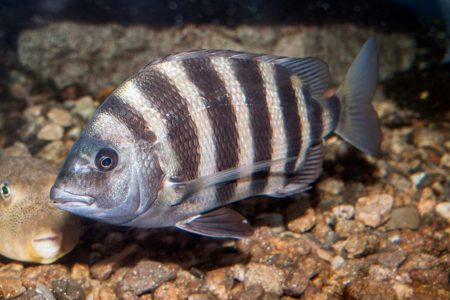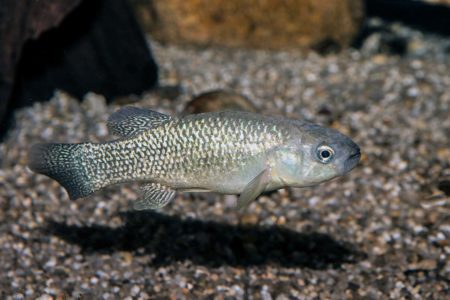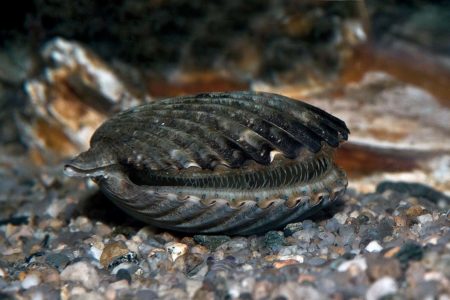
A little background in biology on a popular offshore chunk bait.
Butterfish are a small silvery fish that are found in larger numbers off the coast of North America from South Carolina north to Nova Scotia and Cape Breton, and may stray as far north as the Gulf of Saint Lawrence and to the south and east coasts of Newfoundland, and as far south as the deep waters off of Florida.
They are also known as shiner, skipjack, harvestfish, and dollarfish, depending upon where in its range the fish has been caught.
This species is symmetrically shaped, heavy, has a rounded snout, big eyes, a single dorsal and anal fins. The main feature that helps to identify this fish is its’ very thin, deep body. Similar to a flounder on its edge. This species is only about twice as long as it is deep to the base of its tail fin. It is the only fish of this shape found in the Gulf of Maine. The butterfish is bluish on top, pale on the sides, with many irregular darker spots which fade after dying. Its’ belly is silvery in coloration.
Supposedly, this fish gets its name, where if you were to cut in half down, along the lateral line of the fish, that each half resembles that of a butter knife, hence its name!
Butterfish begin spawning in the Gulf of Maine in June, shortly after they arrive in the region. The peak of the reproduction activity is usually during the month of July, and their eggs have been taken throughout August. Observations at Woods Hole suggest that butterfish spawn some few miles out at sea, returning to the coastwise waters after spawning. In western Nova Scotia, or in the Scotian side of the Bay of Fundy, scientists have found large spawning individuals in St. Mary Bay in July. But despite the considerable number of butterfish eggs that are produced in the Gulf of Maine, it is doubtful that the latter has favorable nursery habitat for this fish. Butterfish fry are very plentiful, along the shores of southern New England.
The eggs are buoyant, transparent, spherical, 0.7 to 0.8 mm. in diameter, usually with a single oil globule of about 0.17 to 0.2 mm in diameter. In newly spawned eggs, however, there may be two globules, which coalesce as development progresses. At a temperature of 65 degrees – about the average water temperature during summer months at the surface of Massachusetts Bay – incubation takes less than 48 hours. And it is probable that development can only proceed in comparatively warm water, though the lower temperature limit to successful reproduction is not known.
The larvae are about 2 mm. in length at hatching and they are characterized shortly after by their short deep form, by their 30 muscle-segments, and by the row of black spots along the ventral edge of the fish. The dorsal, anal, and caudal fin rays are visible in larvae of 6 mm. juveniles, when the body has already begun to assume the deep thin form so characteristic of the adult butterfish. At a length of 15 mm. the caudal fin is deeply forked, the dorsal and anal fins are formed, and the little fish resembles the adults sufficiently for ready identification.
Little is known about the remaining life history of the butterfish, considering how familiar and valuable it is. As a rule, they travel in small bands or loose schools; and draggers report catching several times as many by night as by day, suggesting that they are active enough to dodge a trawl, except during the hours of darkness. They often come close inshore, into sheltered bays and estuaries, hence their frequent capture in pound nets. The butterfish also shows a decided preference for sandy bottoms rather than for rocky or muddy bottom.
General experience is that the butterfish keeps mainly near the surface during its stay near the coast, and schools are often seen. In Cohasset on the south side of Massachusetts Bay, for instance, schools of butterfish, 50 to a few hundred, are often to be seen where the flats are covered by only 4 or 5 feet water. Scientists believe butterfish seldom descend deeper than 15 to 30 fathoms during the summer, and that most of the fish caught by the otter trawlers on the Nantucket grounds and on Georges Bank in summer are picked up by the trawl on its way up or down, not while dragging on the bottom.
Available evidence points to that they spend the winter and early spring near bottom, and in depths down to 100 to 115 fathoms.
The butterfish feeds on small fish, squid, Crustaceans that include amphipods and shrimp, as well as annelid worms. And ctenophores have been found in butterfish stomachs in Woods Hole waters, though these watery objects are not a regular item in its diet.
I have seen small schools of this fish darting in and among rocky formations on top of predominantly sand bottom habitat on the south side of coastal Rhode Island during summer months.




